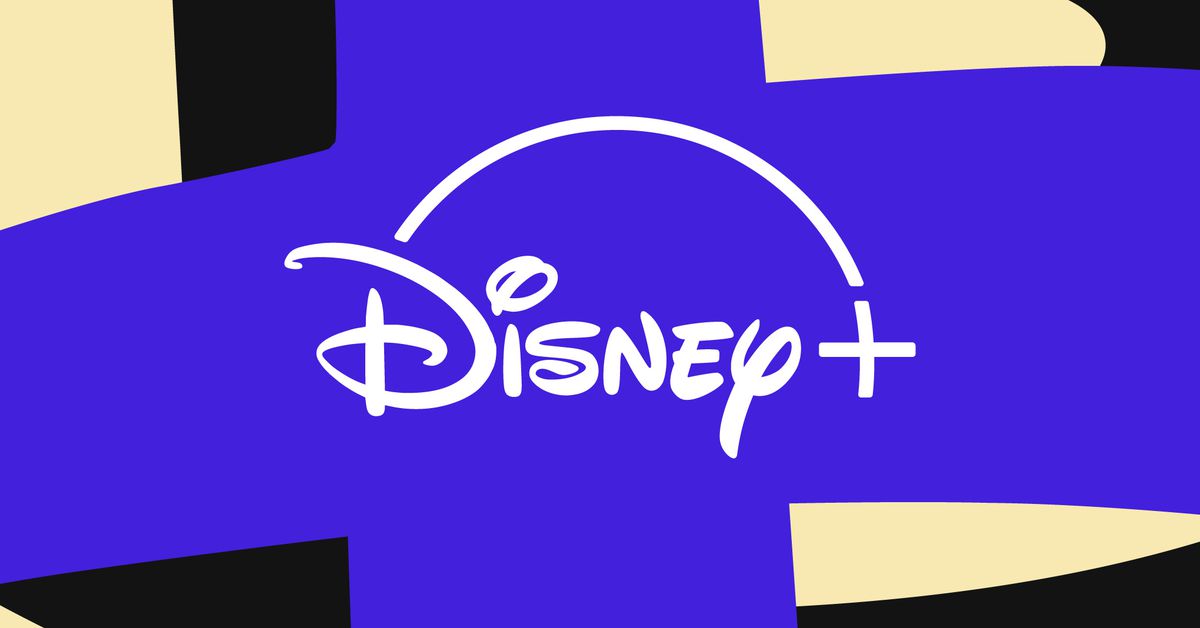Technology
Terminator creator James Cameron joins board of AI company

Filmmaker James Cameron has joined the board of directors of artificial intelligence (AI) firm StabilityAI, 40 years after making a film about its risks.
In 1984’s The Terminator, which Cameron wrote and directed, a rogue AI called Skynet threatens the existence of mankind.
But the creator of the fictional AI has not been hired to help avoid such tech being developed in real life.
Instead, his role will centre around how the technology can be used in special effects, also known as computer-generated images (CGI).
“I’ve spent my career seeking out emerging technologies that push the very boundaries of what’s possible, all in the service of telling incredible stories,” he said.
“I was at the forefront of CGI over three decades ago, and I’ve stayed on the cutting edge since.
“Now, the intersection of generative AI and CGI image creation is the next wave.”
Amongst his long list of hit movies, Cameron is known for creating special effects-heavy Avatar, the highest-grossing film of all time.
His new place of work, StabilityAI, is best known for making Stable Diffusion – which can generate images based on a user’s text prompt.
It is also branching out into video, with Stable Video Diffusion, which works in the same way.
It is this tech that Cameron seems to have been brought on to help develop.
Proponents of AI video generation say it will enable artists to quickly create complicated digital effects.
But for many creatives – and Cameron’s contemporaries – this use of the technology is considered controversial at best.
Last week, Pan’s Labyrinth director Guillermo del Toro criticised AI-generated video during a talk at the British Film Institute in London, saying it could not generate much beyond “semi-compelling screensavers”.
Michael Bay said last year the tech “will create a whole bunch of lazy people” because “it doesn’t create, it just imitates”.
And Hiyao Miyazaki, who wrote and directed animated classic Spirited Away, previously said he was “disgusted” by an AI-generated video and called it “an insult to life itself”.
Rashik Parmar, head of BCS, The Chartered Institute for IT, told the BBC the filmmaker’s appointment comes at a time when “many of society’s fears about AI” come from movies.
“We watch Terminator and we form the idea that AI has malicious intentions towards humanity and that it will destroy us in the near future,” he said.
“Cameron has a real opportunity to change the narrative and build a positive view of AI, we’re very happy to work with him on that.”
One of Cameron’s first challenges in his new role will be to shore up StabilityAI’s position in the wider generativeAI landscape, where it faces stiff competition.
OpenAI’s rival video generation tool Sora is the most high-profile name in the space, with Reuters reporting Hollywood executives have discussed with the firm how the film industry could use its tech.
Meanwhile, Hunger Games and John Wick studio Lionsgate made a deal last week with AI firm Runway to create tools based on its massive archive of film and TV.
And in recent weeks the video generation landscape has been shaken by the sudden emergence of MiniMax, created by China-based HailuoAI.
The tool became popular on social media this month thanks to its ability to quickly create high-quality video from just a few lines of text.
In particular, a recent trend has seen people using the tool to make videos about chef Gordon Ramsay, with one such popular post seeing him skydiving while cooking spaghetti.
Ramsay has not responded to a request for comment.
And Cameron is joining the AI industry at a critical time for a different reason – copyright.
The technology works by analysing human-made pictures, including images found online, and artists claim this means their work has been used without permission.
Stability AI founder Emad Mostaque has previously told BBC News Stable Diffusion is trained using “100,000 GB of images” taken from the internet.
Getty Images, which is working on its own AI image generator, is suing StabilityAI over this very thing.
Technology
How Google reduced Android’s safety vulnerabilities by 52%

For years, Google has been working hard to make Android an increasingly secure OS. Attackers look for any loophole they can exploit, using mundane methods like phishing or more complex ones like memory safety vulnerabilities. Now, Google explains how the Safe Coding approach has managed to significantly reduce memory safety vulnerabilities in Android in recent years.
Google uses Safe Coding approach against memory safety vulnerabilities
Memory safety vulnerabilities are those that take advantage of memory-related bugs, such as buffer overflows, format string issues, or dangling pointers, to interact with or even write over the memory. These types of vulnerabilities are still widely present in software development. Developers try to attack them from various approaches, with mitigations and proactive detections predominating. However, Google is confident that Safe Coding is the ideal approach to minimize memory safety vulnerabilities, as evidenced by its results with Android.
The Safe Coding approach prioritizes the use of memory-safe programming languages from the start. However, there is software that is many years old and has millions of lines of key code developed on “memory-unsafe” languages. So, what is Google’s proposal in these cases? The answer is in the gradual transition to memory-safe languages (like Rust) for new features.
Basically, Google proposes that developers start implementing exclusively memory-safe languages when developing new features. In the meantime, old code based on unsafe languages will remain “unchanged” beyond the classic maintenance and bug fixes. This translates into achieving safe, efficient, and cost-effective interoperability between new and old code.
Android’s memory safety vulnerabilities fell 52% in 6 years
According to Google, the Safe Coding approach resulted in a drop in memory safety vulnerabilities in Android from 76% to 24% in just 6 years. However, the idea of keeping memory-unsafe code can seem counterintuitive. After all, if you’re looking for maximum security, your first thought would be to migrate all your code to a safe language. While this may be true, Google’s approach makes sense, and the company explains why.

In software development, code efficiency and cost-effectiveness are key. There are tools or entire systems with many years of development behind them. This involves millions and millions of fundamental lines of code. While a company could simply start rewriting software from scratch based on memory-safe languages, the investment and effort are probably not worth it. The situation might be different in relatively new developments with not much time behind them, though.
Advantages of Safe Coding and interoperability
Google claims that the Safe Coding approach, which is based on code interoperability, is a cost-effective and practical way to adopt memory-safe code. This, in turn, makes it cost-effective, as it allows companies to leverage previous investments. The cost is significantly lower compared to rewriting software from scratch. It is also efficient because it allows new features to continue to be developed while integrating the new, safe code.
Using inherently memory-safe code also ensures lower costs in the long run. Previous approaches favored an endless cycle of “attack and defend” between developers and attackers. Relying on mitigations and proactive detections necessitated continuous action and investment in response to potential attacks. However, Safe Coding allows developers and companies to forget about this, focusing on maintaining and improving features or fixing bugs.
There is also greater productivity thanks to lower code rollback rates. That is, there are fewer emergency code rollback situations due to unexpected bugs. Google claims that Rust offers code rollback rates of less than half that of C++. Essentially, Safe Coding brings significant savings in time and money for businesses and developers. In today’s industry, which closely monitors profitability, this can be crucial.
Google reveals that it implemented interoperability between “Rust ↔︎ C++ and Rust ↔︎ Kotlin.” The company has also contributed both money and tools to power its approach. For example, Google gave $1,000,000 to the Rust Foundation to boost its evolution. It also provided its own interoperability tools, such as Crubit and autocxx.

This is how the Safe Coding approach makes software more secure
You may still be wondering how an approach that keeps memory-unsafe code can lead to an exponential reduction of memory safety vulnerabilities. Google also explains this in its blog post, in a very technical way, but I’ll try to make it simple for everyone.
Through large-scale studies, USENIX Security and Google itself discovered an intriguing phenomenon. Basically, the research concluded that the vast majority of memory vulnerabilities in software have their origin in new code. A significant portion is also derived from recently modified code. Google also noticed that the density of Android memory safety vulnerabilities decreased progressively in old code.
Given that a significant portion of the issue stems from new code, it makes sense to focus on it, correct? This is the reasoning behind Google’s decision to adopt the Safe Coding approach. But why do more problems and vulnerabilities accumulate in new code? This is because every programming language has a fundamental property: maturation.
While the fundamental structure of a language can make it memory unsafe, successive updates can help mitigate this. So, theoretically, unsafe code used in older parts of the software can become less vulnerable over time. By combining the maturation of older code with new features developed in new, inherently memory-safe code, the result will be an exponential decrease in memory vulnerabilities.

Google recommends Rust as a memory-safe language
Of course, porting parts of older code to languages like Rust can make things even safer. However, this isn’t always possible, at least not in a straightforward way. There are cases where moving a single block can bring down the whole castle. Google is adamant about Rust as a memory-safe programming language. So if you’re interested in learning programming or a new language to be competitive in today’s industry, Rust may be what you’re looking for.
Memory safety vulnerabilities aren’t the only ones out there. Malicious third parties will continue to look for ways to try to bypass the security layers of any software. However, having strong barriers in the “guts” of the software ensures that attackers will have to resort to more mundane and easily neutralized methods. For example, you can avoid being a victim of phishing by simply using common sense.
Servers computers
rack server 8U unboxing
Technology
Meta’s Ray-Ban branded smart glasses are getting AI-powered reminders and translation features

Meta’s AI assistant has always been the most intriguing feature of its second-generation Ray-Ban smart glasses. While the generative AI assistant had fairly limited capabilities when the glasses launched last fall, the addition of real-time information and multimodal capabilities offered a range of new possibilities for the accessory.
Now, Meta is significantly upgrading the Ray-Ban Meta smart glasses’ AI powers. The company showed off a number of new abilities for the year-old frames onstage at its Connect event, including reminders and live translations.
With reminders, you’ll be able to look at items in your surroundings and ask Meta to send a reminder about it. For example, “hey Meta, remind me to buy that book next Monday.” The glasses will also be able to scan QR codes and call a phone number written in front of you.
In addition, Meta is adding video support to Meta AI so that the glasses will be better able to scan your surroundings and respond to queries about what’s around you. There are other more subtle improvements. Previously, you had to start a command with “Hey Meta, look and tell me” in order to get the glasses to respond to a command based on what you were looking at. With the update though, Meta AI will be able to respond to queries about what’s in front of you with more natural requests. In a demo with Meta, I was able to ask several questions and follow-ups with questions like “hey Meta, what am I looking at” or “hey Meta, tell me about what I’m looking at.”
When I tried out Meta AI’s multimodal capabilities on the glasses last year, I found that Meta AI was able to translate some snippets of text but struggled with anything more than a few words. Now, Meta AI should be able to translate longer chunks of text. And later this year the company is adding live translation abilities for English, French, Italian and Spanish, which could make the glasses even more useful as a travel accessory.
And while I still haven’t fully tested Meta AI’s new capabilities on its smart glasses just yet, it already seems to have a better grasp of real-time information than what I found last year. During a demo with Meta, I asked Meta AI to tell me who is the Speaker of the House of Representatives — a question it repeatedly got wrong last year — and it answered correctly the first time.
Technology
Diagrid launches Catalyst to help enterprises build their microservices

Back in 2019, Microsoft launched Dapr, a new open-source project that made building event-driven distributed applications easier for developers. Like so many popular open-source projects, Dapr spawned its own ecosystem, especially after Microsoft donated it to the Linux Foundation. And as is also so often the case, some of the creators of Dapr — and the related KEDA project — left to found their own companies, including Diagrid, which is launching its fully managed Dapr service into public beta today.
The new service, Catalyst, functions as an API platform, offering developers an alternative to managing their own Dapr installations.

“It’s all about building distributed microservices applications and the complexity that developers face today,” Diagrid CEO and co-founder Mark Fussell told me. “Today, basically, there’s still a mess of frameworks that people put together, repetitive boilerplate code, reinventing the software pattern, and having to stitch together reliability and security into all of that. We addressed a lot of these challenges with the Dapr open source project.”
Catalyst, he said, now allows developers to leverage Dapr, no matter which language they use and which platform they prefer. Previously, Diagrid’s Conductor project was something enterprises had to manage on their own using Kubernetes. Not every company is interested in doing that.
While Catalyst currently supports the core Dapr APIs, the Diagrid team aims to provide support for all of them by early next year.
One of the most interesting ones Catalyst already supports is Workflows. “Workflows is very, very important to developers because it is used in a lot of ways,” Diagrid co-founder and CTO Yaron Schneider said. “For example, we’re seeing a lot of companies using Dapr Workflows to build generative AI workloads. Thales, the large multinational French company — they built their entire Gen AI infrastructure on top of Dapr and we’re seeing more and more of these novel types of workloads using Workflows.” In a way, this also now turns Dapr into an all-purpose integration service.
Companies that want to switch between Dapr and the new fully-managed Catalyst only have to change the API endpoint (assuming they are only using the currently supported features).
“Catalyst is why we founded Diagrid in the first place,” Fussell said. “It’s the very reason because we saw a vision that this complexity and difficulty for developers to build these microservices and distributed applications was not being solved. All the major clouds are still focusing on infrastructure and that’s what they do. They have a really hard time thinking about the application developer space, and then they sort of leave it as an exercise to the reader, as it were, to stitch it all together.”
Servers computers
My new SMART HOME Network RACK! (Build and Tour)

TerraMaster D8 Hybrid: Available on Kickstarter on May 7! https://kck.st/3Uwv9xG
I’ve left affiliate links below for any of the products used – if you decide to buy one, using the link will help me financially at no additional cost to you! Thanks!
— Products to build the rack —
Nave Point 12U Server Rack: https://amzn.to/49CFagO
Rack Mount Power Supply: https://amzn.to/4aTaIQE
USB Charging Station: https://amzn.to/4cMFxIy
2U Shelves (14” deep): https://amzn.to/3TWgDh1
1U Shelves (10” deep): https://amzn.to/49A7wZj
TP-Link 24 Port Ethernet Switch: https://amzn.to/49FuUV3
BV-Tech 18 Port PoE Switch: https://amzn.to/43TOJa5
Patch Panel https://amzn.to/43UQ3ta
Keystone Couplers (white): https://amzn.to/3JiVqcq
Keystone Couplers (blue): https://amzn.to/3TOmSDq
2ft Patch Cables: https://amzn.to/3Ugh5bt
1ft Patch Cables: https://amzn.to/3JeRwRN
6in Patch Cables: https://amzn.to/3Wf1j23
Cable Clips: https://amzn.to/3WgLOpY
Bulk Cat5e cable: https://amzn.to/4aVMO7j
RJ45 Crimp Tool Kit: https://amzn.to/4cXmo6I
RJ45 Pass Through Connectors: https://amzn.to/3JfnpJN
— Products on the Rack —
SmartThings Hub: https://amzn.to/3QgLofL
Ecowitt Hub: https://amzn.to/3xYwQe8
Ecowitt Hub + Weather Station: https://amzn.to/3W6fOVJ
Aqara M2 Hub: https://amzn.to/3WaED2Q
Zimaboard 832: https://amzn.to/3w6MO5v
USB C to A Cable (to connect D8 Hybrid to ZimaBoard): https://amzn.to/4azkA2k
Samsung nVMe 1TB Drive: https://amzn.to/43TIvXP
WD 4 TB HDDs: https://amzn.to/3TUMtL9
Hubitat Elevation C8: https://amzn.to/3W5M1wl
Pironman Case: https://amzn.to/3UvmxYb
Raspberry Pi 4B: https://amzn.to/49Rk3HT
Eufy HomeBase 3: https://amzn.to/4d8n5KI
Eufy Cameras + HomeBase: https://amzn.to/3xInT8K
— The Stuff behind me —
Desk Glow Lamp: https://amzn.to/3GlfAAB
Desk Architect’s Lamp: https://amzn.to/3ihPdUf
Monitors: https://amzn.to/3ZgN63r
Monitor Mounts: https://amzn.to/3vN1z9M
Mouse: https://amzn.to/3It7595
Keyboard: https://amzn.to/3ik7jon
StreamDeck: https://amzn.to/3wqEfyY
Desk Microphone: https://amzn.to/3IwCYxz
Acoustic Panels: https://amzn.to/3wnALNV
Chair: https://amzn.to/3XAgfoX
Studio Headphones: https://amzn.to/3WVnffR
Under-Cabinet Speakers: https://amzn.to/3IxkHQP
Camera: https://amzn.to/3imNq04
Desk Backlighting Strip: https://amzn.to/3vJvLCX
Desk Backlighting Controller: https://www.athom.tech/blank-1/wled-high-power-led-strip-controller
Desk Backlighting Power Supply: https://amzn.to/3IwduAD
Desk Board: https://amzn.to/3CwFbFy
Desk Brackets: https://amzn.to/3GJHDeh
–Filming setup–
Camera: https://amzn.to/3jOsb7C
Charger/Batteries: https://amzn.to/3k0fVRr
Camera Stand: https://amzn.to/3XifZux
Microphone: https://amzn.to/3WRpYXV
Monitor: https://amzn.to/3vMcnoB
Key Light: https://amzn.to/3WTJkvo
—-
DISCLAIMER: This video and description contains affiliate links, which means that if you click on one of the product links, I’ll receive a small commission at no extra cost to you!
Join this channel to get access to perks:
https://www.youtube.com/channel/UCGoreZKPBtCXCf54F3DF4ug/join
Buy Me a Coffee if you want:
https://www.buymeacoffee.com/makeitwork.tech
Website:
https://www.makeitwork-tech.com/
The socials:
▶FOLLOW on Twitter: https://twitter.com/MakeItWorkTech
▶FOLLOW on Instagram: https://www.instagram.com/makeitworktech/
▶FOLLOW on Facebook: https://www.facebook.com/MakeItWorkTech
▶FOLLOW on Reddit: https://reddit.com/user/Make_Itt_Work
▶JOIN my Discord: http://discord.gg/cb7jNh37p2
▶CHECK OUT my GitHub: https://github.com/makeitworktech/home-assistant-config/
▶CHECK OUT my Amazon Shop: https://www.amazon.com/shop/makeitwork
Deliberate Thought by Kevin MacLeod is licensed under a Creative Commons Attribution 4.0 license. https://creativecommons.org/licenses/by/4.0/ .
source
Technology
Here’s how much Disney Plus will charge to share your password

Disney CEO Bob Iger said the company would start making users pay to share their passwords this month, and now we know how much it will cost. In a support page spotted by CordBusters, Disney Plus says adding an “extra member” to an ad-supported plan will cost $6.99 monthly, with that price going up to $9.99 for its ad-free plan.
The company says the extra member offering will let you share your subscription with a friend or family member who lives outside your household. This option only applies if you have a standalone subscription to Disney Plus — not the bundle with Hulu, ESPN Plus, and other services — and if you’re billed by Disney directly.
The extra member add-on comes with some limitations, too. That member will be restricted to one profile, and they can only stream and download on one device at a time. Disney also says extra members “cannot have an active Hulu subscription, or an active or canceled Disney+ or ESPN+ subscription.” The Verge reached out to Disney with a request for more information about this but didn’t immediately hear back.
-

 Womens Workouts2 days ago
Womens Workouts2 days ago3 Day Full Body Women’s Dumbbell Only Workout
-

 News1 week ago
News1 week agoYou’re a Hypocrite, And So Am I
-

 Technology1 week ago
Technology1 week agoWould-be reality TV contestants ‘not looking real’
-

 Sport6 days ago
Sport6 days agoJoshua vs Dubois: Chris Eubank Jr says ‘AJ’ could beat Tyson Fury and any other heavyweight in the world
-

 News3 days ago
News3 days agoOur millionaire neighbour blocks us from using public footpath & screams at us in street.. it’s like living in a WARZONE – WordupNews
-

 Science & Environment6 days ago
Science & Environment6 days ago‘Running of the bulls’ festival crowds move like charged particles
-

 Science & Environment6 days ago
Science & Environment6 days agoSunlight-trapping device can generate temperatures over 1000°C
-

 Science & Environment1 week ago
Science & Environment1 week agoHow to unsnarl a tangle of threads, according to physics
-

 Science & Environment7 days ago
Science & Environment7 days agoITER: Is the world’s biggest fusion experiment dead after new delay to 2035?
-

 Science & Environment6 days ago
Science & Environment6 days agoQuantum ‘supersolid’ matter stirred using magnets
-

 Science & Environment7 days ago
Science & Environment7 days agoHow to wrap your mind around the real multiverse
-

 CryptoCurrency6 days ago
CryptoCurrency6 days agoEthereum is a 'contrarian bet' into 2025, says Bitwise exec
-

 Science & Environment7 days ago
Science & Environment7 days agoMaxwell’s demon charges quantum batteries inside of a quantum computer
-

 Science & Environment1 week ago
Science & Environment1 week agoTime travel sci-fi novel is a rip-roaringly good thought experiment
-

 Science & Environment7 days ago
Science & Environment7 days agoLiquid crystals could improve quantum communication devices
-

 CryptoCurrency6 days ago
CryptoCurrency6 days agoDZ Bank partners with Boerse Stuttgart for crypto trading
-

 CryptoCurrency6 days ago
CryptoCurrency6 days agoBitcoin bulls target $64K BTC price hurdle as US stocks eye new record
-

 Science & Environment7 days ago
Science & Environment7 days agoWhy this is a golden age for life to thrive across the universe
-

 Science & Environment6 days ago
Science & Environment6 days agoHyperelastic gel is one of the stretchiest materials known to science
-

 Science & Environment6 days ago
Science & Environment6 days agoQuantum forces used to automatically assemble tiny device
-

 Science & Environment7 days ago
Science & Environment7 days agoLaser helps turn an electron into a coil of mass and charge
-

 Science & Environment1 week ago
Science & Environment1 week agoNerve fibres in the brain could generate quantum entanglement
-

 Science & Environment1 week ago
Science & Environment1 week agoCaroline Ellison aims to duck prison sentence for role in FTX collapse
-

 Science & Environment6 days ago
Science & Environment6 days agoNuclear fusion experiment overcomes two key operating hurdles
-

 CryptoCurrency6 days ago
CryptoCurrency6 days agoBitcoin miners steamrolled after electricity thefts, exchange ‘closure’ scam: Asia Express
-

 CryptoCurrency6 days ago
CryptoCurrency6 days agoCardano founder to meet Argentina president Javier Milei
-

 CryptoCurrency6 days ago
CryptoCurrency6 days agoDorsey’s ‘marketplace of algorithms’ could fix social media… so why hasn’t it?
-

 CryptoCurrency6 days ago
CryptoCurrency6 days agoLow users, sex predators kill Korean metaverses, 3AC sues Terra: Asia Express
-

 Science & Environment3 days ago
Science & Environment3 days agoMeet the world's first female male model | 7.30
-

 News6 days ago
News6 days agoIsrael strikes Lebanese targets as Hizbollah chief warns of ‘red lines’ crossed
-

 Technology6 days ago
Technology6 days agoiPhone 15 Pro Max Camera Review: Depth and Reach
-

 News6 days ago
News6 days agoBrian Tyree Henry on voicing young Megatron, his love for villain roles
-

 Health & fitness1 week ago
Health & fitness1 week agoThe secret to a six pack – and how to keep your washboard abs in 2022
-

 CryptoCurrency6 days ago
CryptoCurrency6 days agoRedStone integrates first oracle price feeds on TON blockchain
-

 CryptoCurrency6 days ago
CryptoCurrency6 days agoSEC asks court for four months to produce documents for Coinbase
-

 CryptoCurrency6 days ago
CryptoCurrency6 days ago‘No matter how bad it gets, there’s a lot going on with NFTs’: 24 Hours of Art, NFT Creator
-

 CryptoCurrency6 days ago
CryptoCurrency6 days agoBlockdaemon mulls 2026 IPO: Report
-

 CryptoCurrency6 days ago
CryptoCurrency6 days agoCoinbase’s cbBTC surges to third-largest wrapped BTC token in just one week
-

 Sport6 days ago
Sport6 days agoUFC Edmonton fight card revealed, including Brandon Moreno vs. Amir Albazi headliner
-

 Science & Environment6 days ago
Science & Environment6 days agoHow one theory ties together everything we know about the universe
-

 Science & Environment7 days ago
Science & Environment7 days agoQuantum time travel: The experiment to ‘send a particle into the past’
-

 Science & Environment6 days ago
Science & Environment6 days agoPhysicists are grappling with their own reproducibility crisis
-

 CryptoCurrency6 days ago
CryptoCurrency6 days ago2 auditors miss $27M Penpie flaw, Pythia’s ‘claim rewards’ bug: Crypto-Sec
-

 CryptoCurrency6 days ago
CryptoCurrency6 days agoJourneys: Robby Yung on Animoca’s Web3 investments, TON and the Mocaverse
-

 CryptoCurrency6 days ago
CryptoCurrency6 days ago$12.1M fraud suspect with ‘new face’ arrested, crypto scam boiler rooms busted: Asia Express
-

 CryptoCurrency6 days ago
CryptoCurrency6 days agoCertiK Ventures discloses $45M investment plan to boost Web3
-

 CryptoCurrency6 days ago
CryptoCurrency6 days agoVitalik tells Ethereum L2s ‘Stage 1 or GTFO’ — Who makes the cut?
-

 CryptoCurrency6 days ago
CryptoCurrency6 days agoEthereum falls to new 42-month low vs. Bitcoin — Bottom or more pain ahead?
-
Business6 days ago
How Labour donor’s largesse tarnished government’s squeaky clean image
-

 News6 days ago
News6 days agoBrian Tyree Henry on voicing young Megatron, his love for villain roles
-

 Womens Workouts4 days ago
Womens Workouts4 days agoBest Exercises if You Want to Build a Great Physique
-

 Womens Workouts4 days ago
Womens Workouts4 days agoEverything a Beginner Needs to Know About Squatting
-

 News6 days ago
News6 days agoChurch same-sex split affecting bishop appointments
-

 Politics1 week ago
Politics1 week agoTrump says he will meet with Indian Prime Minister Narendra Modi next week
-

 Politics6 days ago
Politics6 days agoLabour MP urges UK government to nationalise Grangemouth refinery
-

 News7 days ago
News7 days agoRoad rage suspects in custody after gunshots, drivers ramming vehicles near Boise
-

 Health & fitness1 week ago
Health & fitness1 week agoThe maps that could hold the secret to curing cancer
-

 CryptoCurrency6 days ago
CryptoCurrency6 days agoHelp! My parents are addicted to Pi Network crypto tapper
-

 CryptoCurrency6 days ago
CryptoCurrency6 days agoCrypto scammers orchestrate massive hack on X but barely made $8K
-

 Science & Environment6 days ago
Science & Environment6 days agoTiny magnet could help measure gravity on the quantum scale
-

 Science & Environment6 days ago
Science & Environment6 days agoUK spurns European invitation to join ITER nuclear fusion project
-

 Science & Environment6 days ago
Science & Environment6 days agoWhy we need to invoke philosophy to judge bizarre concepts in science
-

 Science & Environment6 days ago
Science & Environment6 days agoFuture of fusion: How the UK’s JET reactor paved the way for ITER
-

 Science & Environment6 days ago
Science & Environment6 days agoHow do you recycle a nuclear fusion reactor? We’re about to find out
-

 CryptoCurrency6 days ago
CryptoCurrency6 days agoSEC sues ‘fake’ crypto exchanges in first action on pig butchering scams
-

 CryptoCurrency6 days ago
CryptoCurrency6 days agoCZ and Binance face new lawsuit, RFK Jr suspends campaign, and more: Hodler’s Digest Aug. 18 – 24
-

 CryptoCurrency6 days ago
CryptoCurrency6 days agoBeat crypto airdrop bots, Illuvium’s new features coming, PGA Tour Rise: Web3 Gamer
-

 CryptoCurrency6 days ago
CryptoCurrency6 days agoTelegram bot Banana Gun’s users drained of over $1.9M
-

 CryptoCurrency6 days ago
CryptoCurrency6 days agoVonMises bought 60 CryptoPunks in a month before the price spiked: NFT Collector
-

 CryptoCurrency6 days ago
CryptoCurrency6 days ago‘Silly’ to shade Ethereum, the ‘Microsoft of blockchains’ — Bitwise exec
-
Business6 days ago
Thames Water seeks extension on debt terms to avoid renationalisation
-
Politics6 days ago
‘Appalling’ rows over Sue Gray must stop, senior ministers say | Sue Gray
-

 News6 days ago
News6 days agoBrian Tyree Henry on his love for playing villains ahead of “Transformers One” release
-

 News4 days ago
News4 days agoBangladesh Holds the World Accountable to Secure Climate Justice
-

 News3 days ago
News3 days agoWhy Is Everyone Excited About These Smart Insoles?
-

 News3 days ago
News3 days agoFour dead & 18 injured in horror mass shooting with victims ‘caught in crossfire’ as cops hunt multiple gunmen
-

 Travel1 day ago
Travel1 day agoDelta signs codeshare agreement with SAS
-

 Technology6 days ago
Technology6 days agoFivetran targets data security by adding Hybrid Deployment
-

 Science & Environment6 days ago
Science & Environment6 days agoSingle atoms captured morphing into quantum waves in startling image
-

 Money7 days ago
Money7 days agoWhat estate agents get up to in your home – and how they’re being caught
-

 Technology1 week ago
Technology1 week agoCan technology fix the ‘broken’ concert ticketing system?
-

 Science & Environment6 days ago
Science & Environment6 days agoA new kind of experiment at the Large Hadron Collider could unravel quantum reality
-

 Fashion Models6 days ago
Fashion Models6 days agoMixte
-

 Science & Environment6 days ago
Science & Environment6 days agoHow Peter Higgs revealed the forces that hold the universe together
-

 News1 week ago
News1 week ago▶️ Media Bias: How They Spin Attack on Hezbollah and Ignore the Reality
-

 Science & Environment6 days ago
Science & Environment6 days agoBeing in two places at once could make a quantum battery charge faster
-

 CryptoCurrency6 days ago
CryptoCurrency6 days agoLouisiana takes first crypto payment over Bitcoin Lightning
-

 Science & Environment6 days ago
Science & Environment6 days agoA tale of two mysteries: ghostly neutrinos and the proton decay puzzle
-

 CryptoCurrency6 days ago
CryptoCurrency6 days agoDecentraland X account hacked, phishing scam targets MANA airdrop
-

 CryptoCurrency6 days ago
CryptoCurrency6 days agoElon Musk is worth 100K followers: Yat Siu, X Hall of Flame
-

 CryptoCurrency6 days ago
CryptoCurrency6 days agoBitcoin price hits $62.6K as Fed 'crisis' move sparks US stocks warning
-

 CryptoCurrency6 days ago
CryptoCurrency6 days agoMemecoins not the ‘right move’ for celebs, but DApps might be — Skale Labs CMO
-

 CryptoCurrency6 days ago
CryptoCurrency6 days agoETH falls 6% amid Trump assassination attempt, looming rate cuts, ‘FUD’ wave
-
Politics6 days ago
The Guardian view on 10 Downing Street: Labour risks losing the plot | Editorial
-

 Politics6 days ago
Politics6 days agoI’m in control, says Keir Starmer after Sue Gray pay leaks
-
Business6 days ago
UK hospitals with potentially dangerous concrete to be redeveloped
-
Politics6 days ago
‘Hundreds’ of prisoners freed early in England and Wales not fitted with tags | Prisons and probation
-
Business6 days ago
Axel Springer top team close to making eight times their money in KKR deal
-

 Politics6 days ago
Politics6 days agoParties, brothels and drugs plague holiday let neighbours, say MPs
-

 News6 days ago
News6 days ago“Beast Games” contestants sue MrBeast’s production company over “chronic mistreatment”


You must be logged in to post a comment Login